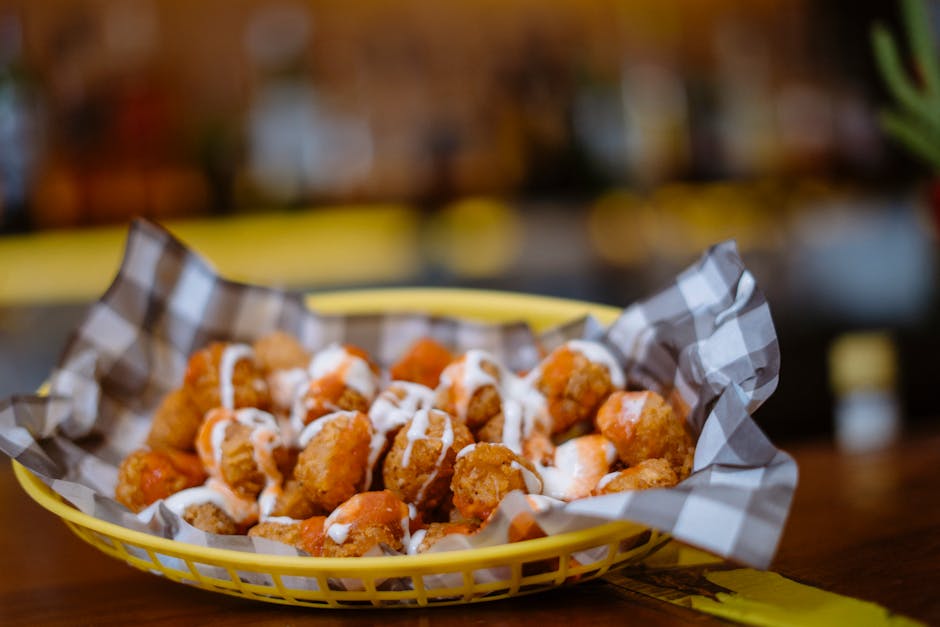So, everyone talks about Maine Coons, right? Like, they’re the really big cats. And yeah, they can be. I mean, it’s not just internet stories; you see one in person, and you’re like, “Whoa, that’s a cat, for real.” It’s kinda wild, honestly, how substantial these furballs get. But what’s the real deal with their size? Are they all the size of a small dog, or is some of it just, you know, fluff and good photography?
What’s the Scoop on Their Actual Size?
When people ask about Maine Coon size, they usually think of these giant, fluffy beasts. And yeah, some of them are pretty enormous. But not every single one is going to be the next Guinness World Record holder. There’s a range, just like with people, some are taller, some are shorter.
Generally, for a male Maine Coon, you’re looking at weights anywhere from, oh, I’d say 13 to 18 pounds. That’s a good, solid cat. But then you’ve got the bigger boys, and they can easily hit the low 20s. I’ve heard of some tipping the scales in the mid-20s, maybe even touching 28 pounds, but those are truly the outliers, the big ones that get all the headlines. They aren’t fat cats either, we’re talking muscle and bone. Female Maine Coons are typically a bit daintier, though “dainty” for a Maine Coon still means a sizable animal. Most females usually weigh between 9 and 13 pounds, with some of the larger ones reaching 15 or 16 pounds. A friend of mine has a female named Luna, and she’s a solid 14 pounds, and she seems huge when she stretches out.
It’s not just about how much they weigh, either. Length is a big part of it. These cats are long. From the tip of their nose to the very end of their bushy tail, a full-grown Maine Coon can easily measure over three feet. Yeah, like, thirty-six inches or more. That’s a pretty long cat to have curled up on your lap. Or, trying to squeeze into a carrier. And they’re tall, too, usually about 10 to 16 inches at the shoulder. Think about that compared to your average house cat, who might only be 9 or 10 inches tall. So, when they stand up and stretch, they really can reach some impressive heights.
They Don’t Exactly Pop Out Fully Grown
What’s interesting about Maine Coons is how long they take to get big. Most cats are basically done growing by the time they’re a year old. Maybe they fill out a little bit more, but their height and length are pretty much set. Not Maine Coons. These guys are on their own timeline. They keep growing, sometimes pretty steadily, until they’re three to five years old. Yeah, five years! Can you believe it? That means you might get a kitten who seems normal-sized, and then for years, you’re just watching them expand, bit by bit. It’s like having a perpetual teenager who just keeps getting bigger shoes. This extended growth period definitely helps them achieve those impressive adult dimensions.
What Makes Some Bigger Than Others?
So why does one Maine Coon end up being a gentle giant, while another is just, well, a regular big cat? There are a few things that play a role.
Genetics, Obviously: This is a big one. If a kitten’s mom and dad were both on the larger side, chances are their offspring will have that genetic predisposition to be big too. It’s like how tall people often have tall kids. Good breeders pay attention to lines that produce healthy, well-sized cats. You can’t really make a small Maine Coon grow into a huge one if the genes aren’t there.
What They Eat Matters a Lot: Nutrition, guys, it’s not just for people. What a Maine Coon eats, especially during those long growing years, really shapes their eventual size and health. A high-quality diet, with the right balance of protein, fats, and other stuff, helps their bones and muscles develop properly. If a kitten doesn’t get enough good food, or the right kind of food, their growth could be stunted. But, don’t go thinking you can just overfeed them to make them bigger. That just makes for an unhealthy, overweight cat, not a bigger one. There’s a difference between big and fat, and we definitely want healthy big.
Being Healthy is Key: This one’s pretty straightforward. A kitten or young cat who gets sick a lot, or has chronic health problems, might not grow as much as a healthy one. Their body is busy fighting off illness instead of putting all its energy into growing. So, regular vet check-ups and keeping them healthy are super important.
Boys vs. Girls (Usually): I mentioned this already, but it’s worth saying again. Male Maine Coons are generally bigger than females. It’s just how it usually works in the cat world, and especially with this breed.
The Spay/Neuter Thing: This is interesting. Some people say that spaying or neutering a cat before they’ve fully matured can sometimes make them a bit stockier, or at least change their metabolism a bit. I’ve heard anecdotal stuff about it, but there isn’t a super strong scientific consensus that it dramatically changes their ultimate size. It’s more about their bone plates closing and hormonal influences. Anyway, most vets recommend spaying or neutering for health and population control, regardless of whether it adds an extra ounce or two.
It’s Not Just How Much They Weigh
When you think about a Maine Coon’s size, you gotta think beyond just the number on the scale. Their sheer presence, you know? It’s their bone structure, which is really solid and heavy. And their musculature—they’re athletic cats, not just big lumps.
Then there’s the fur. Oh my goodness, the fur. Maine Coons have these long, shaggy, glorious coats, especially around their neck (the “ruff”) and on their tails. This incredible fur makes them look even bigger than they already are. It adds so much volume. You could probably take like, two pounds of fluff off some of them, and they’d still be big. This is what I call the “fluff factor.” It really plays tricks on your eyes, making them seem even more imposing. A lot of those viral photos that make a Maine Coon look like a small bear? Probably a lot of fluff and a good camera angle at play.
Living with a Giant (or a Really Big) Cat
Having a Maine Coon, especially one of the bigger ones, changes things around the house a bit. You gotta be ready.
Litter Boxes: Forget the regular-sized ones. You need a jumbo litter box. Seriously, the biggest one you can find. Otherwise, you’re gonna have, um, messes. And these cats are usually pretty good about their litter, so if they’re going outside the box, it’s probably too small for them to comfortably do their business.
Food and Water Bowls: These should be large and sturdy. A little ceramic bowl will just get pushed around the kitchen. They need something with some heft. And they drink a lot, so a big water bowl or even a pet fountain is a good idea.
Cat Trees and Furniture: This is a biggie. Standard cat trees? Most likely too small and unstable. A big Maine Coon launching itself off a cheap cat tree is an accident waiting to happen. You need something built for, like, a small child. Solid wood posts, wide bases, big perches. My friend’s BFG (Big Fluffy Guy) needed a custom-built one, no joke.
More Food, Obviously: Bigger cat means more calories needed. But remember, quality over quantity. Talk to your vet about the right amount and type of food for their size and activity level.
Vet Visits and Meds: When your cat weighs 20 pounds, medication dosages are different than for a 10-pound cat. And handling them at the vet can be, well, a bit of a workout for the vet tech. And yes, bigger cats sometimes mean slightly higher vet bills for things like anesthesia, because it’s usually dosed by weight.
Carriers: That little plastic carrier you used for your last cat? Yeah, no. You’ll need one that looks like it’s for a small to medium-sized dog. They need space to stand up and turn around comfortably.
And the lap cat thing? They’re often super affectionate and love a good cuddle, but when a 20-pound cat decides your lap is their napping spot, prepare for numb legs. It’s a loving burden, for sure.
The Real Deal vs. The Internet Hype
Let’s be real, the internet is full of pictures of Maine Coons that look like they’re straight out of a fantasy movie. Like, truly monstrous in size. And while some are genuinely huge, a lot of those pictures are taken with forced perspective (where the cat is closer to the camera than the person holding it) or with particularly small people. What’s important is focusing on a healthy, proportionate Maine Coon, not just chasing the biggest possible size. An overweight Maine Coon is not a truly big Maine Coon; it’s an unhealthy one. The goal is a cat that’s big, muscular, and agile, not one struggling with its weight.
I believe it’s about appreciating their natural, impressive stature without falling for the exaggerated myths. My own experience with Maine Coons has shown me that even a “medium” sized one, maybe 12-14 pounds, still feels incredibly substantial and magnificent. They don’t need to be 30 pounds to be an awesome Maine Coon.
FAQs About Maine Coon Size
It’s natural to have questions when you’re thinking about these majestic creatures. Here are a few common ones I hear:
How much does a fully grown male Maine Coon weigh?
Most male Maine Coons, when they’re fully grown (which can take up to 5 years, remember!), usually weigh between 13 to 18 pounds. But you’ll definitely find some bigger boys who get into the low to mid-20s, like 20 to 25 pounds, especially if they have big parents and a good, healthy lifestyle.
Do Maine Coons keep growing after one year?
Absolutely, they do! This is a big difference between them and most other cat breeds. While many cats are done growing by their first birthday, Maine Coons typically continue to grow, fill out, and mature until they are three to five years old. So, don’t be surprised if your “kitten” keeps getting bigger and bigger for a few years.
Is a 15-pound Maine Coon small?
For a female Maine Coon, 15 pounds is actually quite a decent size, on the larger end of the typical female weight range (9-13 pounds). For a male, 15 pounds would be right in the middle, or perhaps even a bit below the average range (13-18 pounds). So, no, a 15-pound Maine Coon is not small at all. It’s a very respectable size for the breed, leaning towards big for a female and perfectly normal for a male.
What’s the average length of a Maine Coon?
From the tip of their nose to the end of their tail, a typical adult Maine Coon can measure anywhere from about 30 to 40 inches (that’s 2.5 to over 3 feet!). Their long, bushy tails really add a lot to that overall length, making them appear even more impressive. So, they truly are quite long cats.
Does neutering affect Maine Coon size?
Well, this is one of those things people often wonder about. The general consensus is that while neutering (or spaying) can slightly influence metabolism and potentially make a cat prone to gaining a bit more weight if not managed, it doesn’t typically alter their genetic potential for length or height significantly. Some believe it can contribute to a slightly stockier build because of hormonal changes and a slower metabolism. But the primary drivers of ultimate size are still genetics and good nutrition during their long growth period.















